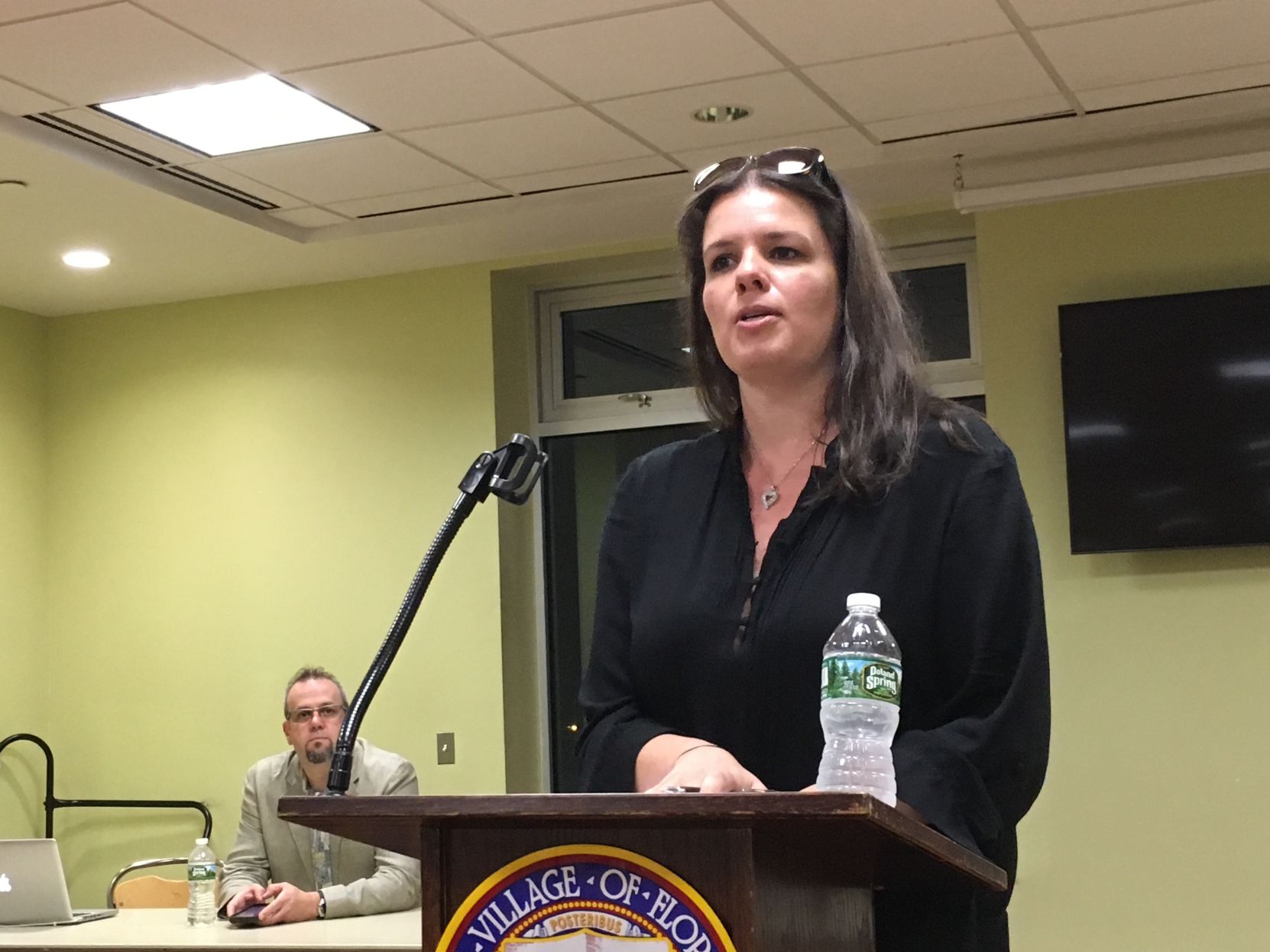Opponents of the Long Island Rail Road’s third track say a federal agency should oversee the environmental study of the project rather than the railroad itself.
An environmental study under the New York State Environmental Quality Review Act is underway, but other work the railroad has done should trigger a study under the National Environmental Policy Act, or NEPA, a federal law, Hicksville civic activist Tanya Lukasik said in Floral Park last Thursday.
With a federal review, “there’s more analysis and research that needs to be done, and for something like this, you’ll have officials and professionals that know how to do this work,” Lukasik told the village’s South Side Civic Association.
Other Floral Park civic leaders and officials, including Mayor Thomas Tweedy, have said the federal law should govern the plan to build a third track along 9.8 miles of the LIRR’s Main Line so a federal agency could make sure the LIRR is doing the environmental study correctly.
Other federally funded LIRR projects related to the third track qualify as “interconnected activities” that should trigger a NEPA review, Lukasik said.
The LIRR started the environmental review process for its 2005 third track plan under NEPA before abandoning it three years later.
But officials for the LIRR and the Environmental Protection Agency said a federal review of the 9.8-mile, $1.5 billion project is not necessary because it will not use federal money, and the state’s environmental law is more stringent anyway.
“We’ve said numerous times that this is a state project and we’re using the state process,” project spokesman Shams Tarek said.
Passed in 1969, NEPA establishes guidelines for environmental studies of federal projects and state projects that use federal funds or require approval from federal agencies or officials.
The third track would not require federal approvals and the LIRR plans to fund it entirely with state money, according to the final outline of the project’s environmental study released last month. That study is being conducted under the state environmental law, also known as SEQRA.
While another environmental study under NEPA would be required if the LIRR ever got federal money for the project, one is not required as things currently stand, said Grace Musumeci, who oversees NEPA compliance for the EPA in New York, New Jersey, Puerto Rico and the U.S. Virgin Islands.
“If there’s no specific federal funding for this project, that’s what would really indicate whether it would fall under NEPA or not,” Musumeci said.
Lukasik specifically cited the LIRR’s construction of a pocket track on the Port Washington branch in the Village of Thomaston as an example of a related federally funded project that should make NEPA applicable to the third track.
That would be the case only if a prior federally funded project’s environmental study mentioned it as a “foreseeable,” EPA spokesman John Martin said in an email.
The LIRR’s environmental assessment of the Thomaston project does not mention the third track.
The state Department of Transportation applied for a federal grant to rebuild the LIRR’s Ellison Avenue bridge in Westbury but was not awarded one.
SEQRA requires mitigation of certain environmental impacts that NEPA does not require, Musumeci said.
The state law “stands out among the most expansive and rigorous environmental planning laws in the nation,” E.J. McMahon wrote in a 2013 report for the Empire Center, a conservative think tank.



